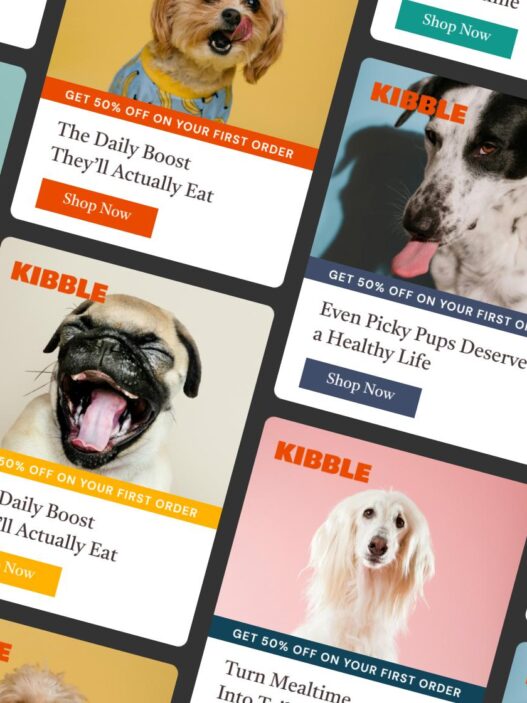How often do you hear of “the next big thing” in digital advertising? Well, this next one is actually a real next big thing — although it’s already here. If there’s one thing we’ve witnessed changing, it’s how brands reach their customers. And it’s happening faster than you think.
If you’re not already tuned into retail media networks, you might be missing out. These networks are transforming the retail media landscape, with digital channels and programmatic display ads opening up new opportunities.
Whether a brand owner or marketer, understanding these platforms is essential, especially as the retail media industry grows. Think of it like this: If you embrace the future of advertising today, you’ll be among tomorrow’s leaders.
In this guide, we’ll break down why retail media networks are crucial and which ones are leading the way. Let’s get on with it.
What Are Retail Media Networks?
Retail media networks let brands place ads directly on a retailer’s website, app, or other digital channels where customers are already shopping. They’re like billboards in a digital mall that catch someone right as they’re deciding to buy — talk about perfect timing.
These networks are shaking up the retail media landscape and making advertising a whole lot smarter than it’s ever been.
How Do Retail Media Networks Work?
Retail media networks are the matchmakers of the retail media industry. They pair brands and shoppers together on retailers’ digital platforms and, using programmatic display tech, show ads right when customers are ready to buy.
You remember that last-minute suggestion that made you grab that chocolate bar or scented candle at checkout? Well, that’s exactly how these networks help shoppers find what they didn’t realize they needed while giving brands the perfect moment to shine.
It’s a win-win!
However, backstage, these networks use customer data and tech to create highly relevant and personal ads.
Key Benefits of Retail Media Networks
Now you know what retail media networks are and how they operate. How can you use them to benefit your brand and customers?
Let’s explore the key benefits of retail media networks.
For brands:
- Reach shoppers right when they’re about to buy their offerings.
- Use customer data to show the right ads to the right people.
- See how your ads are doing so you can adjust them on the fly.
- Get better returns by targeting the right audience.
- Get your brand noticed on popular shopping sites.
- Learn more about what customers like to improve your marketing.
For shoppers:
- Find products that actually match what they’re looking for.
- Get suggestions for things they might like, right when they need them.
- Enjoy a shopping experience that feels more personal.
- Get the info they need before making a purchase.
- Have a smoother and more fun shopping experience.
Choosing the Right Retail Media Network
With all these benefits, it’s obvious that using a retail media platform is a smart move for your brand. However, mimbi puts the number of retail media networks at 200+ worldwide. With that many RMNs, where exactly do you start?
Here are some factors to consider when choosing the right retail media network.
Budget Considerations
According to Statista, brands will spend over $176 billion in retail media ads by 2028. But does that mean you should break the bank to partake in this venture? Absolutely not, even though retail media advertising has lots of benefits.
While you don’t want to overspend, you don’t want to go too cheap and miss out on some great opportunities, either. The good news is you can find networks that partner with small brands with tighter budgets.
A little bit of research will help you figure out where you’ll get the most value for your ad spend.
Size and Scale of Operations
How big do you want to go? If you’re a small brand just getting started, it might be illogical to go for a network built for mega-corporations.
But, as your brand grows, it’s best to partner with a network that can scale with you. While larger networks offer a wider reach, they come with a hefty price tag. On the other hand, smaller networks may be wallet-friendly, but they might not hit the same audience size.
The key is choosing a network that fits where you are now and where you want to be later.
Niche Offerings and Specializations
You’ve heard before that the riches are in the niches? Well, so have RMNs.
Some networks are choosy, catering to specific industries, while others are more general. A specialized RMN is best if your brand fits that niche, making it easier for you to connect with the right audience.
Let’s assume you own a fitness brand. It’ll do well with a network focused on health and wellness. But if your brand doesn’t double down on any niche, then a general RMN might work just fine. The aim here is to pick a network that matches your brand’s vibe and goals.
Data Measurement Capabilities
You’ve gotta know how your ads are doing, right?
Thanks to data, you can. It’s alarming to know, however, that only 23% of brands prioritize data quality as part of their brand ethos, while 91% say data quality had some level of impact on their organization.
The best networks give you clear insights, such as how many people click your ad or how much sales are up. This helps you make smarter decisions and tweak your ad strategy when needed. Look for a network with easy-to-understand data and solid reporting tools. After all, you want your ad spend to actually work for you.
Technological Integration
Will the network’s tech play nice with the tools you’re already using?
You’ll want a network that integrates easily with your website, CRM, and other platforms. While some RMNs make this breezy, others might just bail on you to deal with all the extra work. It’ll be much easier to manage your ads and track how they’re performing with user-friendly tools and smooth tech integration.
Leading Retail Media Network Players
The RMNs that lead the charge include Amazon Advertising, Walmart Connect, and Target’s Roundel. Let’s take a closer look at each.
Overview of Amazon’s RMN
Amazon launched its RMN, Amazon Advertising, in 2012, making it a pioneer in the retail media advertising industry.
As an e-commerce leader, Amazon boasts over 310 million global shoppers, giving brands a solid space to display their products. Out of these shoppers and other visitors, the retailer collects a staggering 1 exabyte of customer data to help brands create effective ads on its network. Plus, brands can both display their ads via sponsored product listings and display them where they can easily get noticed.
So, you shouldn’t be surprised that its share of digital ad spending in the U.S. is projected to reach 15.2% by 2025, up from 11.8% in 2022.
Overview of Walmart’s RMN
Walmart is the world’s largest retailer by revenue, and it reaches 90% of households across the U.S. With such an extensive reach, it provides unmatched ad opportunities for brands through its RMN.
Formerly the Walmart Media Group, the retailer launched Walmart Connect in early 2021, and by 2023, it had already bagged $3.4 billion in revenue. Chances are this figure will increase by 31.6% by the end of 2024, according to EMARKETER.
Walmart Connect is Walmart’s answer to retail media advertising, offering brands sponsored search, onsite display, offsite media, and in-store brand experiences to display ads. And thanks to closed-loop measurement, the RMN can provide a 360-degree view of customer behavior, making it easy for brands to track ad campaigns.
Overview of Target’s RMN
Target launched its RMN in 2016, calling it Target Media Network. However, in 2019, the retailer renamed the network to Roundel to match its bigger vision and growing capabilities.
Since then, Roundel has become one of Target’s top revenue drivers. It drove over 250 million visits to Target’s sites in 2023. On top of Target’s own channels, digital platforms like live shopping and social media contributed 35% of its revenue.
It’s also excelling in the revenue front, having generated over $1 billion for the past three years and was targeting $2 billion by 2024.
With data from over 165 million guests, Roundel helps brands create better ads they can display via display ads, target product ads, programmatic displays, Connected TV, search ads, YouTube ads, and social media ads.
Future Trends in Retail Media Networks
Like time, the retail media landscape is constantly moving forward, making significant changes. Here are the top retail media trends that you can’t afford to miss.
B2B Marketing Opportunities
B2B marketing is a ripe field for digital ads, a fact that retail media networks are beginning to notice and one they’re planning on capitalizing on. They’re moving away from consumer-focused ads and into B2B marketing for various reasons, such as:
- Better growth opportunities
- Stronger partnerships
- Data monetization
- Diversification, reducing their reliance on B2C advertising
- Better ad capabilities
- Many B2B brands are in the middle of a digital transformation
According to EMARKETER, RMNs are expected to have a compound annual growth rate of 24.1% between 2024 and 2028.
The Rise of Strategic Partnerships
Retail media networks are no longer going at it alone. Instead, they’re teaming up with tech companies, advertisers, and even other retailers to strengthen their ad platforms. By 2025, RMNs are more likely to partner in areas like streaming TV, influencer marketing, and AI.
And it’s not just for the shiny new features. These partnerships promise better tools, reach more people, and are better equipped to keep up and adapt to the changes in digital advertising. At the end of the day, everyone wins: Brands get better options, and RMNs get to grow their reach.
Demand for Transparency in Advertising
As retail media networks get bigger, everyone’s asking for more clarity. They want to know exactly where ads are showing up, how they’re performing, and how their data is being used.
This isn’t just a nice-to-have anymore; it’s becoming crucial.
Sure, industry regulations like the General Data Protection Regulation (GDPR) and the California Consumer Privacy Act (CCPA) are nudging brands to use consumer data correctly and be open about it. Nevertheless, RMNs are stepping up with more open, accountable practices to keep trust high and campaigns effective.
The goal? Ensure everyone feels confident about what’s happening behind the scenes.
Challenges Facing Retail Media Networks
We’ve looked at the immense benefits that retail media networks bring to the table. Now, it’s time to explore the top challenges with RMNs.
Data Privacy Concerns
Shoppers are really concerned about what becomes of their data once brands collect it. In fact, according to a recent Pew Research Center survey, 67% of consumers have no idea how brands use their personal data! As RMNs rise, it’s becoming more challenging to handle data privacy, more so now that they’re staring at a cookieless future.
Moreover, industry regulations and standards like the GDPR, CCPA, and others are on the frontlines, seeing to it that brands honor their commitment when it comes to consumer privacy.
Does it always work? Unfortunately not. Brands such as Meta, Google, Amazon, and others have faced criticism and fines for failing to meet this obligation.
Scalability Issues
If only scaling an RMN was as simple as flipping a switch. RMNs must juggle various elements, ranging from tech integrations and data management to fragmented tech stacks and personalization at scale, to name a few.
And let’s not forget all the teams involved — executive, finance, sales, ad ops — you name it. Each group has its own set of hurdles, and getting them to work together smoothly is no small feat. Plus, integrating new media operations with traditional retail processes adds another layer of complexity.
Normally, a lot happens behind the scenes of a retail media network operation. Throw scaling into the mix, and an RMN without a solid plan can find itself in a tangled mess, which can slow down growth and efficiency.
Market Saturation and Competition
Two hundred: That’s the number of RMNs in the retail media industry, and that’s just the beginning. As online and brick-and-mortar are also launching their own networks, that number will most likely increase in the near future.
Additionally, big players like Amazon, Walmart, and Target have set the bar so high that everyone wants in on the action. And with this comes fierce competition and an uphill battle for new entrants to stand out. The market could easily become saturated as more retailers jump on the retail media advertising bandwagon.
What does this mean exactly?
For RMNs:
- Reduced ad prices and squeezed profit margins
- Less motivation to innovate
- Fragmented audience, making it harder to reach the right audience effectively
- More spending on marketing and promotions
- Reduced quality of services, resulting in negative customer experiences
- Increased scrutiny by industry regulators
For brands:
- Diminished ROI
- Higher cost of placing premium ads
- Increased headaches in navigating and managing multiple RMNs
- More ads, leading to ad fatigue among customers
- Risk of brand messages getting lost in the noise
The good news is, there’s a way you can navigate this changing environment and beat the odds.
Navigate the Evolving Landscape of RMNs With AUDIENCEX
RMNs open a whole world of opportunities, especially for brands without the technology or resources to compete in the big leagues. However, venturing into this field is easier said than done, requiring a partner who’s been running these ropes long enough.
At AUDIENCEX, we keep tabs on all the next big things in digital advertising, including retail media advertising. Our team has developed AI-powered solutions to help brands of all sizes navigate this evolving landscape effectively and reap the most benefits.
Learning the ropes doesn’t have to be challenging. Contact us, and our team will discuss how to best gain from retail media ads.
Retail Media Network FAQs
What Is the Difference Between Retail Media and Retail Media Networks?
Retail media is advertising — “what” — that happens within your digital channels, like websites, apps, or in-store screens. It uses shopper data to help you deliver targeted digital ads, such as programmatic display and display ads.
On the other hand, a retail media network is the actual platform or system — the “how”— that enables these ads. It connects brands with shoppers through digital platforms so they can create retail media ads.
Why Are Retail Media Networks Growing?
Retail media networks are booming because they:
- Tap into first-party data, the premium fuel driving today’s privacy-conscious digital advertising world.
- Let retailers make an extra coin by selling ad space.
- Help brands reach customers exactly when they’re ready to buy.
- Use customer shopping data to make ads more personal and effective.
- Blend online ads with in-store ads for more opportunities to advertise.
- Encourage brands to move their budgets from traditional ads to the retail media landscape.
What Is the Margin on Retail Media Networks?
Retail media networks typically enjoy high margins, often 50% to 70%, according to McKinsey. The reason for such impressive results? RMNs use digital platforms and existing websites or apps, which keeps costs low while earning money from retail media advertising.



















